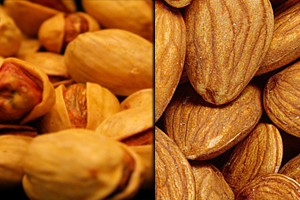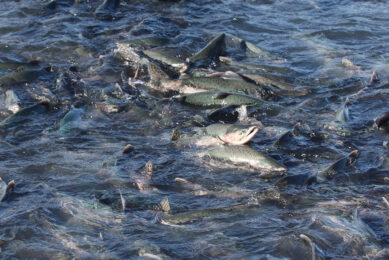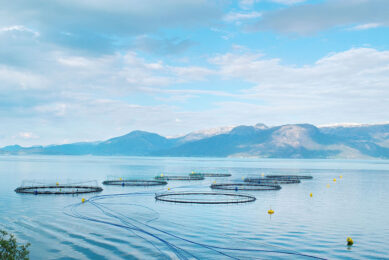Almonds and pistachios tested for use in fish feed

Researchers at the University of Idaho’s Bozeman are developing a new fish food using off – graded almonds, pistachios and barley. Officials within the Pacific Northwest’s aquaculture industry see great regional potential for these new feed ingredients.
The nut-based and barley-based feeds were both developed at the US Fish and Wildlife Service’s Fish Technology Centre in Bozeman, in partnership with private companies. The aquaculture industry has been seeking cost-effective and sustainable feed alternatives to fish meal, which is rising in price as supply grows tighter.
“There’s probably a maximum sustainable yield you can get from the ocean, and we’re probably at that point,” said Randy MacMillan, vice president for research at Clear Springs Food in Buhl, Idaho. “The aquaculture industry internationally needs to find alternatives to fish meal.”
At a plant in Escalon, Calif., Adaptive Bioresources, based in Ontario, has started production of high-protein meal for fish feeds derived from off-grade pistachios and almonds.
The company’s manager, John Hamilton, explained under 3% of pistachios and almonds aren’t of sufficient quality for human consumption and are processed into oils for making cosmetics.
His company uses the freshest off-colour or broken nuts, further processing the nut meal to remove contaminants. The company’s finished oil is sold as a by-product. Most nut oil producers sell the meal as a by-product to livestock feeders.
“It’s probably not going to have a huge impact on the pistachio industry, but if it helps other industries with a more cost-efficient, better-quality feed, that would be great,” said Bob Klein, manager of the Administrative Committee for Pistachios in Fresno, California.
Hamilton said his company started production of the nut-based protein about a year ago, supplying a California fish farm and an Indiana company testing the feed in its own fish diets. He hopes to soon scale up production of the feed. At current nut prices, his feed sells for 68 cents per pound, compared with 91 cents for fish meal. Based on nut supply and freight constrains, Hamilton believes his feed will fit best within the PNW.
Rick Barrows, a research physiologist at the USFWS Bozeman facility, tested the nut-based products in tilapia, trout, salmon and yellow tail. He found fish fed feed in which nut protein replaced fish meal gained equal weight as fish with fish meal diets. He also concluded fish could utilise the proteins and amino acids in nut meal as efficiently as with fish meal.
Barrows, who predicts a trend toward regional ingredients in aquaculture feed, also helped Montana Microbial, located near Butte, Mont., develop high-protein feed from barley. In June, the company started production of its barley-based feed from a pilot facility in Montana. Clear Springs intends to formulate rations with the product and conduct a farm-scale test for about a year. If the trial is successful, Montana Microbial plans to open a larger feed plant that would also produce barley ethanol, either in Montana or Idaho.
Another benefit of using barley is that research suggests fish who consume it excrete less phosphorus, MacMillan said. MacMillan said he’s eager to see how the barley feed performs under actual commercial production conditions.
Join 26,000+ subscribers
Subscribe to our newsletter to stay updated about all the need-to-know content in the feed sector, three times a week. Beheer
Beheer









 WP Admin
WP Admin  Bewerk bericht
Bewerk bericht